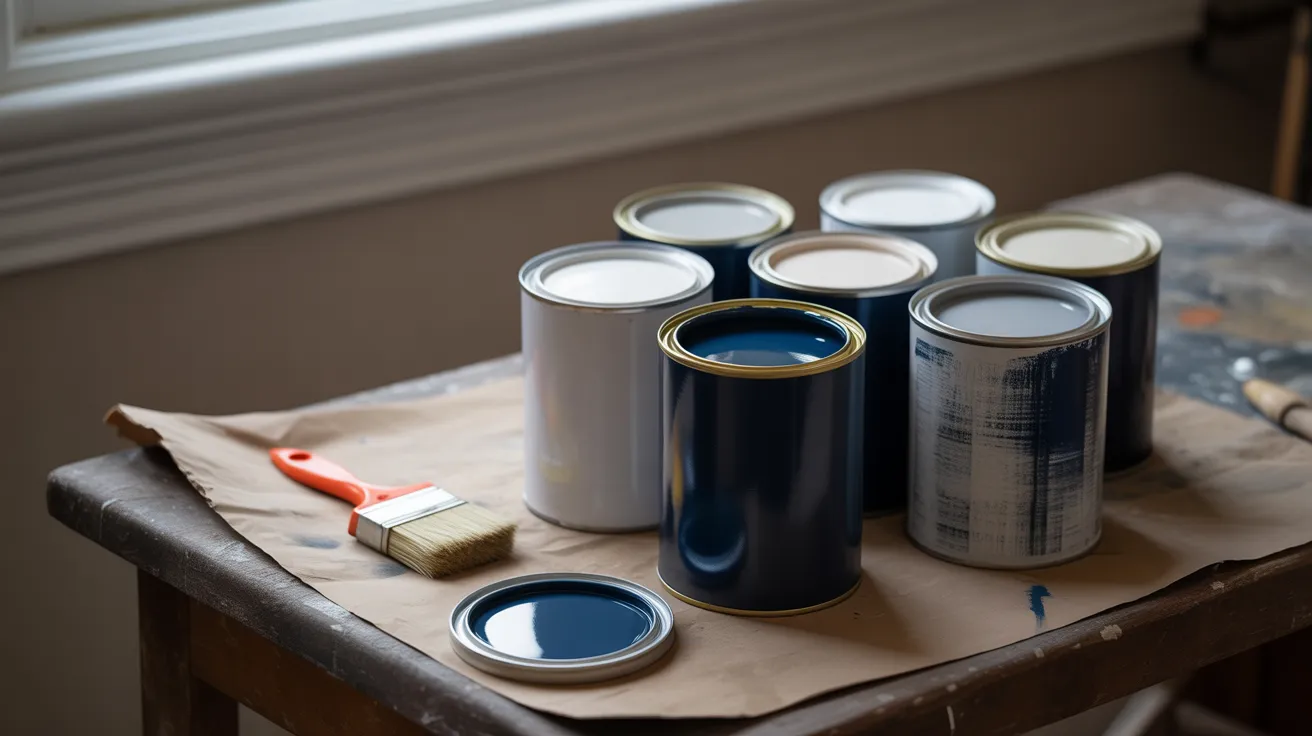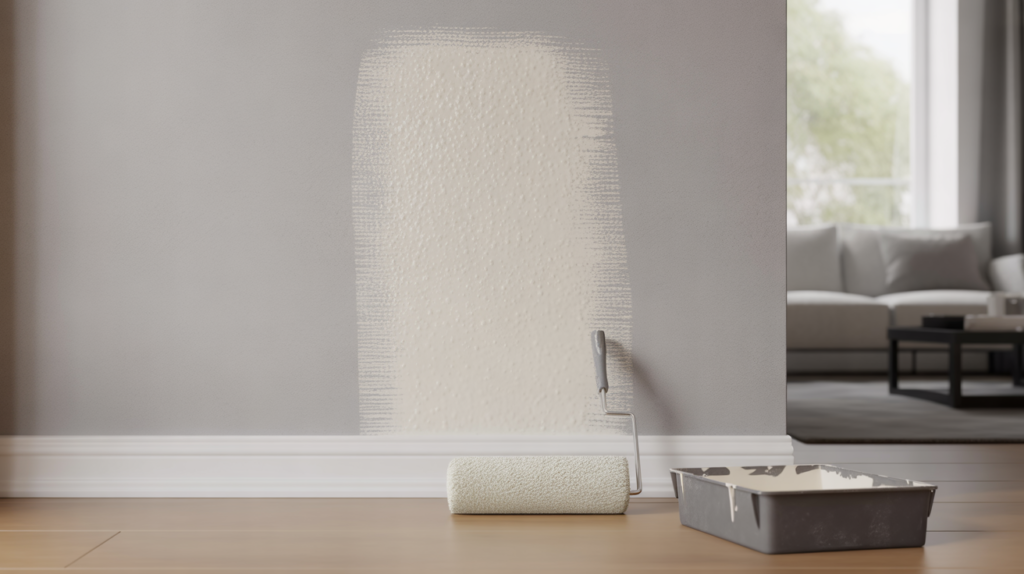Painting your walls can completely change the feel of a room, but the real trick is knowing when to apply that second coat.
It might seem like a small step, but getting the timing right can make the difference between a smooth, clean finish and a wall that looks streaky or messy.
You’ve probably stood there, staring at the wall, asking yourself if it’s dry enough. Should you wait longer? Should you start painting again now?
I get it, painting feels simple until you’re in the middle of it, second-guessing every move.
In this guide, you’ll learn why second coats matter, what affects drying time, and exactly how long you should wait before painting again.
I’ve made mistakes before and learned the hard way, so now I’m sharing everything that actually works.
Follow these tips and you’ll avoid frustration while getting a wall that looks neat, fresh, and professionally done.
Why is a Second Coat Necessary?
Most paints need two coats, no way around it. One coat might seem enough at first, but once it dries, you’ll often notice streaks, uneven color, or old paint showing through.
The first coat acts like a base, sealing the surface and providing the starting layer. But the second coat really evens everything out and gives the wall that clean, smooth look.
Even premium paints that promise “one coat coverage” usually look better with two coats. Two coats provide stronger color, better texture, and longer-lasting protection.
One coat often looks patchy, doesn’t cover well, and wears down faster. Two coats also protect better against daily wear, like scratches or scuffs.
And if you’re painting over dark colors, new drywall, or bare surfaces, two coats are a must. Don’t skip that second coat. It’s the key to getting great, lasting results.
Factors that Affect Drying Time

Drying time can make or break your painting project. Applying the second coat too soon can cause peeling, streaks, or uneven results.
That’s why it’s essential to understand what factors affect how quickly your paint dries. The key factors that play a role are:
- Paint type
- Temperature
- Humidity
- Air circulation
- Coat thickness
- Surface type
- Paint quality
- Room ventilation
When to Apply a Second Coat of Paint

Knowing when to apply the second coat of paint is just as important as how you use it. Rushing this step can lead to peeling, streaks, or uneven coverage.
Wait for the right moment, and your paint job will look smooth, even, and last longer.
1. Read the Label for Recoat Times
Always check the paint can before you start. Every brand has its own recoat time listed on the label. For most latex paints, it’s between 2 to 4 hours.
Oil-based paints usually need 6 to 8 hours. These times aren’t just guesses; they’re tested by the people who made the paint.
Following these directions helps your paint dry properly and stick the way it should.
Skipping this step can lead to peeling or an uneven finish later on. So read carefully and stick to the recommended time for the best results.
2. Use the Touch Test to Check Dryness
The touch test is a simple way to see if your first coat is ready. Lightly press your fingertip on the painted surface.
If it feels dry and doesn’t leave a mark, you’re likely good to go.
But if it still feels sticky or tacky, it needs more time.
Trust your fingers, this test is usually right. Always check in more than one spot to make sure the entire wall is dry. The surface should feel smooth and solid, not soft or damp.
3. Do a Visual Check for Wet Spots
Even if it feels dry, the wall might still be wet in spots.
Take a close look at your surface. If you see any shiny areas or darker patches, that means it’s not fully dry.
Wet paint reflects light differently from dry paint. Your second coat needs a solid, dry surface, or you’ll get uneven results.
Wait until the color looks even and flat across the wall. This quick check is super helpful before applying that second coat.
4. Follow the Four-Hour Rule
When your paint can says four hours, don’t cut it short. Wait at least that long, sometimes more, depending on the room conditions.
I always stick to the full four hours, and I often give it extra time just to be safe. If you paint too soon, the first layer can lift or smear.
This rule helps you avoid those mistakes.
Even if you’re in a rush, waiting pays off. You’ll get better coverage, smoother results, and fewer problems down the line.
5. Don’t Apply Too Early
Painting the second coat too soon causes big problems.
The first coat may not be fully dry underneath, and adding more paint can pull it off or smear it.
You’ll end up with streaks, brush marks, or patches where the new paint doesn’t stick right. These problems are hard to fix and take more time in the end.
Waiting might feel slow, but it actually saves you hours. Be patient, it’s worth it.
6. Try the Morning and Afternoon Strategy
Here’s a simple plan that works for most people: paint your first coat in the morning, then apply the second coat in the afternoon.
Most latex paints dry enough in 4 to 6 hours, so this timing works well. It lets you finish your project in one day without rushing the drying process.
Just be sure the weather is on your side, and avoid humid or cold days.
This strategy keeps your workflow steady and your results smooth.
7. Account for Weather Conditions
Weather affects paint drying more than most people realize. On humid days, paint requires more time to dry.
Add at least an hour or two. Cold temperatures slow the drying even more, so plan if it’s chilly.
Paint can dry faster on hot or dry days, but you still need to check for full Dryness. Always adjust your timing to match the conditions in your space.
Watching the weather means fewer mistakes and better results.
Community Discussions Around Applying a Second Coat of Paint
There’s a lot of debate about how long to wait between paint coats. Some follow the 2-hour rule for latex paint, while others recommend waiting 4–6 hours to be safe.
Professionals usually take a cautious approach, giving paint more time to dry. DIYers sometimes rush and learn the hard way that patience leads to better results.
Rushing can cause peeling, streaks, or an uneven finish. While some worry about waiting too long, it’s rarely a problem.
The safest bet? Follow the manufacturer’s instructions and adjust for your climate. Wait longer in humid areas. Dry areas dry faster. When in doubt, wait it out.
Tips for Applying the Second Coat of Paint
Getting the second coat right is just as important as the first. It’s your chance to smooth out any flaws, build even coverage, and create a finish that looks clean and professional.
Taking a few extra steps between coats can make a big difference in the final result. The following are some key tips to help you apply that second coat the right way:
- Prepare your brush and roller
- Check for imperfections
- Maintain consistent conditions
- Use proper technique
- Work in sections
- Quality control
- Clean as you go
Conclusion
Applying a second coat too early can ruin everything you’ve worked on. The first layer might lift, streak, or smear.
Then you’re stuck redoing the whole wall, wasting time, energy, and paint. It’s a mistake that’s easy to make, but even easier to avoid.
Those recoat times printed on the paint can aren’t just there for show. They’re tested and proven by professionals who know how paint behaves.
Following them gives you a smoother, longer-lasting finish that looks clean and polished.
Waiting a little longer between coats might feel boring, but it makes a big difference.
It keeps your walls from peeling and helps the color look even and strong. Rushing only leads to more work.
Have you made mistakes when painting? Or found smart ways to time your second coat just right? I’d love to hear your tips and lessons.
Drop them in the comments so we can all get better together.
Frequently Asked Questions
Can You Apply a Second Coat of Paint the Same Day?
Yes, most latex paints allow it. Just wait 2–4 hours between coats, depending on conditions and the product instructions, to avoid peeling or streaking.
Should You Sand Between Paint Coats?
Yes, lightly sanding with fine-grit paper helps smooth imperfections and improves paint adhesion. Only sand areas with visible flaws like drips or bumps, then wipe clean before recoating.
Does Primer Need the Same Drying Time?
Yes, primer should be completely dry before painting over it. Most need at least 1–4 hours, depending on the type, temperature, and humidity levels in the room.
What Temperature Is Best for Painting?
The ideal range is 65–75°F with low humidity. Avoid painting during very hot, cold, or damp conditions, as these can affect how the paint dries and bonds.
Can You Use a Hair Dryer to Speed Drying?
No, using a hair dryer is not recommended. It can cause uneven drying, cracking, or bubbles. Let your paint dry naturally for the best and most even results.

